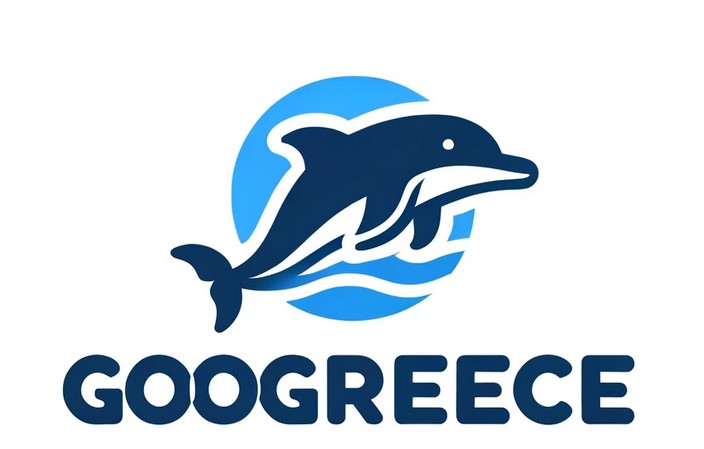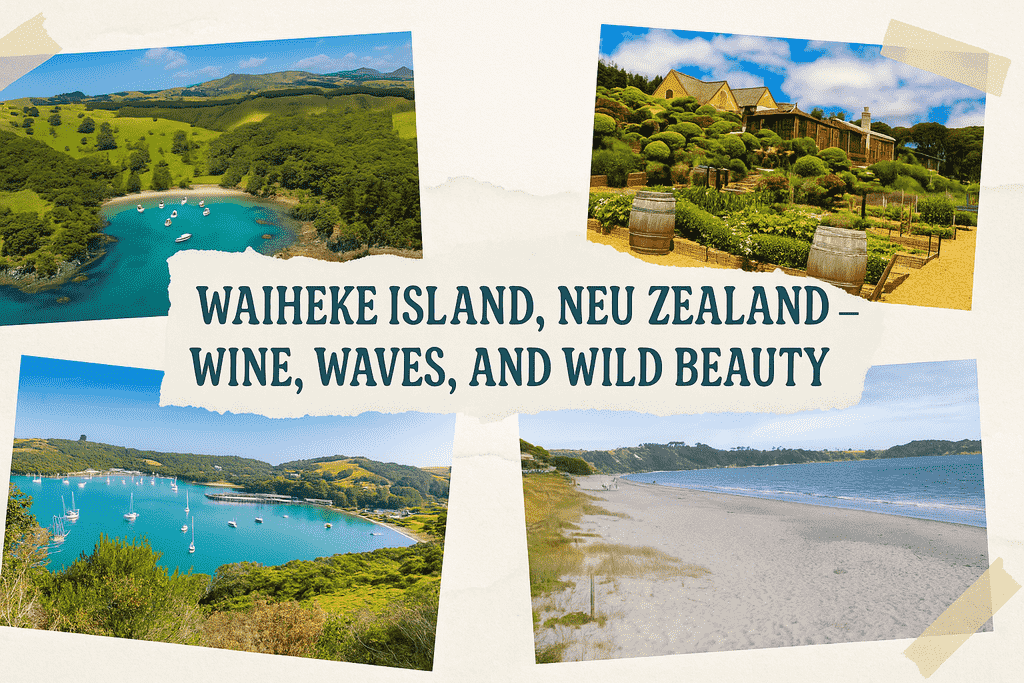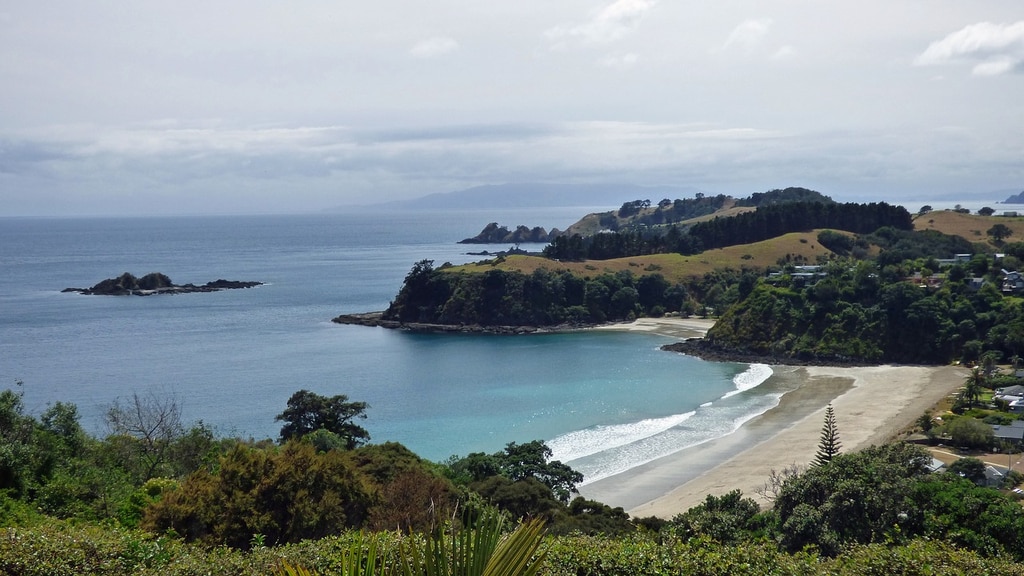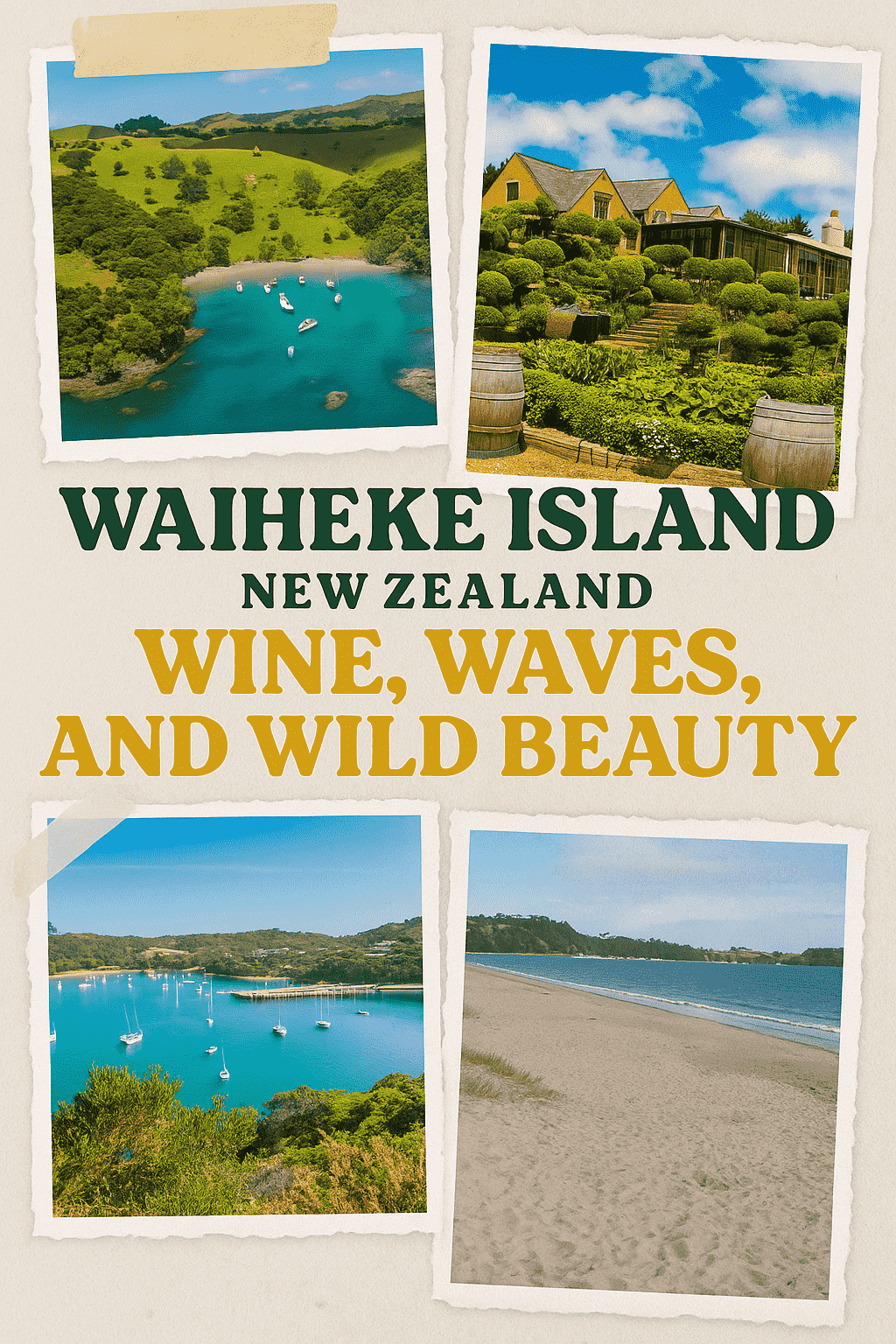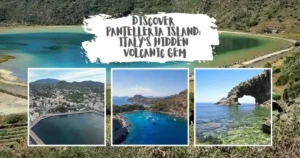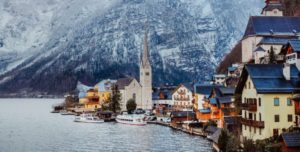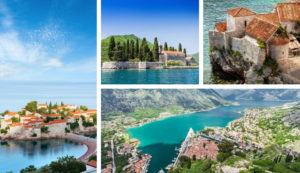Waiheke Island, New Zealand – Wine, Waves, and Wild Beauty
Just a 40-minute ferry ride from downtown Auckland, Waiheke Island feels like an escape to another world. It’s a place where vines roll down to the sea, artists find endless inspiration, and the rhythm of life is set to the sound of waves gently hitting secluded coves. Often overlooked by travelers who stick to New Zealand’s more famous attractions, Waiheke Island offers an irresistible blend of natural beauty, boutique experiences, and laid-back island culture. It’s a destination that surprises and enchants with every corner turned.
This isn’t a flashy island filled with resorts and crowds. Waiheke is for those who appreciate slow travel – the kind where you stop to chat with a winemaker, spend a morning kayaking to a private beach, or linger over wood-fired pizza and a glass of Syrah as the sun dips behind the vines. Whether you’re coming for the world-class wine, the sweeping coastal trails, or the creative energy that flows from local galleries and community markets, Waiheke delivers an authentic taste of island life.
A Quick Intro to Waiheke: Nature, Art, and Island Charm
Located in the Hauraki Gulf, Waiheke is New Zealand’s second-largest island and often called “the Island of Wine” – a fitting nickname given its more than 30 vineyards and boutique wineries. But Waiheke is much more than wine. It’s home to olive groves, native bush trails, golden beaches, and cliff-top lookouts that rival any in the Southern Hemisphere. Around 9,000 people live on the island full time, creating a tight-knit and deeply creative community that values sustainability, organic living, and slow food. You’ll find roadside honesty boxes selling avocados, bike racks outside cafés, and sculpture parks where sheep graze peacefully among contemporary art. The pace is relaxed but never dull. Waiheke may be peaceful, but it’s far from sleepy.
Getting There and Getting Around
The most common way to reach Waiheke is by ferry from Auckland’s downtown terminal, a 35 to 40-minute scenic journey across the Hauraki Gulf. Ferries run frequently, and tickets cost around NZD $46 return. There’s also a car ferry from Half Moon Bay if you prefer to bring your own wheels. Once on the island, getting around is part of the fun. If you’re staying more than a day or two, a rental car or scooter is handy for exploring the island’s hidden corners. Otherwise, the local buses and on-demand shuttle services cover most routes, including key stops like Oneroa, Onetangi, and Palm Beach. And for something extra special? Waiheke is ideal for cycling, especially electric bikes which make tackling the island’s rolling hills a breeze.
Wine with a View: Waiheke’s Legendary Vineyards
Waiheke Island’s reputation as a wine destination is well earned. The island’s microclimate – dry, sunny, and tempered by the surrounding sea – is ideal for growing red varietals like Syrah, Merlot, and Cabernet Sauvignon. But Waiheke wines aren’t just about what’s in the bottle; they’re also about the setting. Many wineries double as hilltop restaurants or garden cafés, where you can sip world-class vintages with views over turquoise bays and lush valleys. Top stops include Mudbrick Vineyard, with its romantic stone buildings and French-style gardens; Cable Bay, known for its contemporary design and ocean-facing lawn; and Te Motu, a rustic family-run estate offering hearty platters and rich Bordeaux-style blends. Most tastings cost NZD $10–$15, often waived if you buy a bottle. Many vineyards also serve food, from artisan platters to full fine-dining menus. Booking ahead is a good idea, especially in summer or during harvest season.
Insider Tip: Offbeat Wineries
While the big names get the spotlight, don’t overlook the smaller, lesser-known cellars that dot the island. Kennedy Point is the only certified organic vineyard on Waiheke and offers intimate tastings under century-old pohutukawa trees. Obsidian is another local gem, known for its volcanic-soil reds and unpretentious cellar door. Or head to Peacock Sky, where you can enjoy wine and food pairing experiences in a forested setting. These spots often have fewer crowds and more time for one-on-one chats with the winemakers themselves.
More Than Just Wine: Waiheke’s Beaches, Walks, and Water
Waiheke Island isn’t just about indulgence – it’s also a nature-lover’s paradise. Some of the North Island’s most beautiful beaches are found here, each with its own character. Oneroa Beach is the easiest to reach, right below the island’s main village. Its calm waters and family-friendly vibe make it great for swimming and paddleboarding. Onetangi Beach is the longest and most dramatic, with nearly two kilometers of white sand perfect for long walks and beachfront dining. If you prefer something quieter, Palm Beach offers calm, crystal-clear water and shady picnic spots, while Little Oneroa is a local secret with rock pools and a wood-fired pizza caravan that’s famous across the island. But the real magic happens when you explore the island’s rugged coastline. Waiheke has over 100 km of walking trails, ranging from gentle headland paths to multi-hour hikes through regenerating native forest. One of the best is the Te Ara Hura trail, a 100-km network that circles the island. You don’t have to walk it all – pick a section like the Matiatia to Owhanake loop, which delivers sea cliffs, hidden beaches, and epic views with only moderate effort. Bring water, sunscreen, and a hat – the sun here is no joke.
Adventure on the Water
If you love being on the water, Waiheke is your playground. Kayaking, paddleboarding, snorkeling, and sailing are all popular activities. Join a guided sea kayak tour and explore sea caves, spot stingrays, and maybe even dolphins. Or charter a small boat to discover the island’s hidden coves and beaches only accessible by water. The marine life in the Hauraki Gulf is surprisingly rich, and if you’re lucky, you might see orcas during their seasonal visits.
Local Life: Markets, Art, and Community
Waiheke has a strong artistic and artisanal scene. Oneroa, the island’s main village, is packed with small galleries, boutique stores, and cafés with sea views. Highlights include the Toi Gallery, showcasing contemporary Māori art, and Space Studio, which features work from local painters, potters, and designers. There’s also a thriving craft scene, with locals producing everything from handmade soaps and olive oil to ceramics and sculpture. Every Saturday, the Ostend Market becomes the social hub of the island, drawing locals and visitors alike. Here you’ll find everything from organic veggies and fresh-baked sourdough to vintage clothes and tarot readings. Grab a coffee, chat with the locals, and browse the eclectic mix of stalls. It’s the best way to feel the island’s unique character and see what the community is all about.
Eating on Waiheke: Fresh, Local, and Delicious
Food on Waiheke is deeply connected to the land and sea. Many restaurants and cafés use seasonal, locally grown ingredients, and menus often change to reflect what’s fresh that day. At the top end, you’ll find places like The Oyster Inn, known for elegant seafood dishes and killer sea views, or Tantalus Estate, where fine dining meets vineyard atmosphere. For casual meals, Island Gelato does artisan ice cream in creative flavors, and Dragonfired at Little Oneroa beach serves legendary wood-fired pizzas made with local produce. Expect to pay NZD $25–$40 for a main dish at most sit-down restaurants, and around NZD $10–$15 for takeaway or café meals. Coffee is a big deal here, and you’ll find serious baristas crafting flat whites all over the island. Vegetarian, vegan, and gluten-free options are widely available – this is New Zealand, after all.
Olive Oil, Honey, and Island Goods
In addition to wine, Waiheke produces award-winning olive oil, locally harvested honey, and herbal teas. Many vineyards have olive groves, and you can often taste and buy bottles onsite. Some farms, like Rangihoua Estate, offer tastings and mini-tours where you can learn how the oil is made and what makes Waiheke’s flavor profile so special – spicy, peppery, and rich. Bring home a few bottles as souvenirs, or pick up small-batch honey from roadside stalls. Everything is grown or made right here, which gives it that unmistakable island taste.
Where to Stay: From Coastal Cabins to Vineyard Villas
Accommodation on Waiheke ranges from budget-friendly hostels and glamping sites to luxurious private villas with sweeping ocean views. For a romantic getaway, consider a vineyard lodge with a private deck and outdoor bath. Delamore Lodge is a five-star retreat perched on the cliffs above Owhanake Bay – a splurge, but unforgettable. If you’re traveling with friends or family, holiday homes are a popular option, offering full kitchens, sea views, and space to relax. Prices vary widely depending on the season. Expect to pay around NZD $80–$150 per night for basic options, and $250–$600+ for luxury stays. Booking early is essential in the high season (December to March), especially for weekends and public holidays.
When to Visit and What to Pack
Waiheke is a year-round destination, but the best time to visit is late spring through early autumn – from November to April. This is when the beaches are at their best, vineyards are lush, and events like the Sculpture on the Gulf and local festivals bring extra energy to the island. Summers are warm and dry, with daytime temperatures between 22°C and 28°C. Evenings can be cooler, especially by the sea, so bring a light jacket. Winters are mild (10°C to 16°C) but wetter, with quieter vibes and often lower prices. For your trip, pack casual clothes, walking shoes, swimwear, and a good sunhat. No need to dress up here – even the best restaurants embrace a smart-casual, barefoot-luxury kind of look.
Why Waiheke?
Waiheke isn’t just another island escape. It’s a destination that feeds your soul. You come here for the wine, and stay for the people. You plan a day at the beach, and find yourself mesmerized by a hillside sculpture or a forest trail that leads to a bay with no one else around. There’s something grounding about life on Waiheke – a return to rhythm, to nature, to the things that matter. And while it’s easy to get here, it’s much harder to leave without already planning your return.
